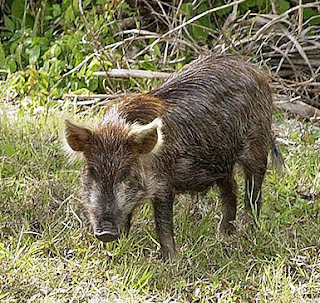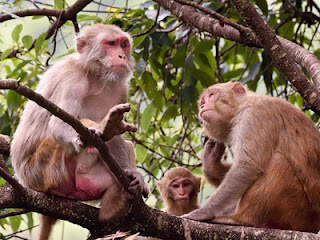 |
| New reconstruction of the sabretooth cat Homotherium, showing that the teeth would not have been as visible as popularly supposed |
Large Herbivores
Probably the most distinctive thing about deer is that the males have antlers; branching bony head ornaments that are shed and regrown each year. This naturally raises the question of how this evolved, since no other animal has quite the same thing. Acteocemas was an Early Miocene deer, but despite living very early in the group's evolutionary history, it already had antlers that split into two near the tip - which the horns of animals such as cows and true antelopes never do. A Spanish fossil of the antlers described earlier this year showed that it was already shed and regrown, but microscopic analysis indicated that it appeared to have been present for over a year, suggesting longer a more irregular pattern of shedding that must have changed to the seasonal pattern we are familiar with more recently, perhaps in the Middle Miocene.






.JPG)
.jpg)


.jpg)
,_Little_Shasta,_Siskiyou_County_CA_(24178985295).jpg)
_(6901562708).jpg)


_female_head.jpg)
.jpg)






.jpg)

.jpg)


.jpg)

.jpg)



.jpg)

.jpg)






